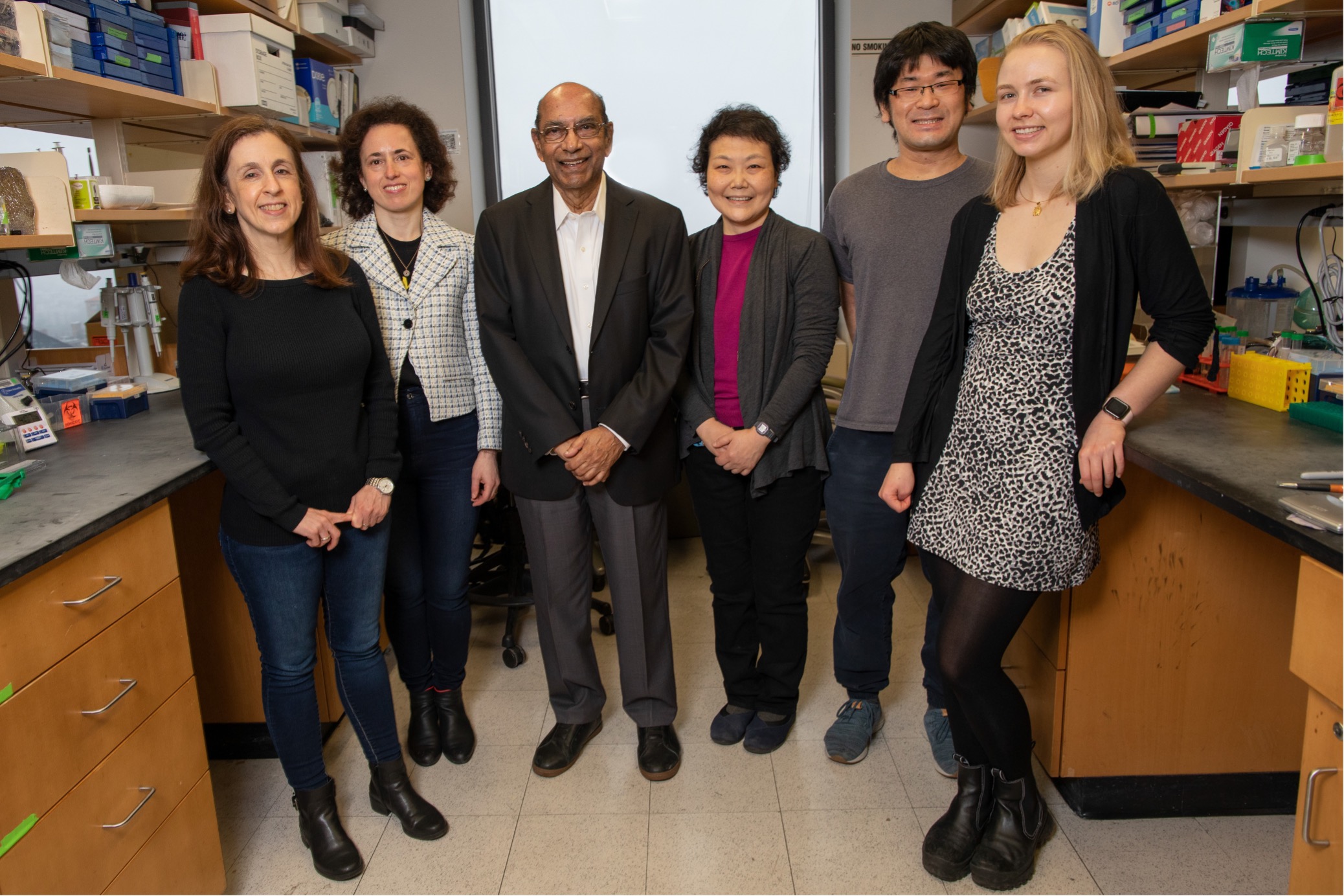Breast Cancer
Targeting Drug Resistance in Triple-Negative Breast Cancer




Posted August 2, 2022
E. Premkumar Reddy, Ph.D., and Hanna Irie, M.D., Ph.D.,
Icahn School of Medicine at Mount Sinai
 E. Premkumar Reddy, Ph.D.(Photo Provided)
E. Premkumar Reddy, Ph.D.(Photo Provided)
 Hanna Irie, M.D., Ph.D.(Photo Provided)
Hanna Irie, M.D., Ph.D.(Photo Provided)
Chemotherapy resistance is a significant issue for patients with triple-negative breast cancer (TNBC), a particularly aggressive subtype of this disease. One mechanism thought to contribute to such resistance is the presence of breast cancer stem cells (BCSCs), a subpopulation of cells that resides within the tumor itself. BCSCs represent a potential therapeutic target since they are relatively resistant to standard chemotherapy and have the ability to self-renew and initiate tumor development. Drs. E. Premkumar Reddy and Hanna Irie previously identified the multi-kinase inhibitor molecule 108600 through a screen for compounds that would preferentially induce death in BCSCs. With support from an FY16 Breakthrough Award - Funding Level 2 - Partnering PI Option, Drs. Reddy and Irie aimed to explore the pathways affected by 108600 and evaluate whether the compound targets BCSCs in preclinical models, with the ultimate goal of identifying a new treatment option for TNBC.
As described recently in Nature Communications, Drs. Reddy and Irie and their research teams demonstrated that 108600 showed remarkable toxicity toward cell line derived BCSC populations and TNBC cell lines, with little toxicity toward normal cells (including those derived from breast tissue). They also found that 108600 potently inhibited characteristics necessary for tumor initiation, including BCSC colonization and mammosphere formation in a 3D environment. Studies demonstrated that 108600 simultaneously inhibits multiple signaling pathways important for BCSC maintenance and/or propagation: the casein kinases II (CK2) pathway, the TRAF2 and NCK interacting kinases (TNIK) pathway, and the dual-specificity tyrosine phosphorylation-regulated kinase (DYRK) pathway. These pathways are robustly expressed in most TNBC cell lines and BCSCs, with relatively lower expression in normal cells, suggesting that 108600 could act on BCSC cells with minimal effect on normal cells.
When tested in mouse models of breast cancer developed from TNBC cells, the team demonstrated a significant reduction in tumor volumes in mice treated with the test compound, indicating that 108600 is a potent inhibitor of TNBC tumor growth. Importantly, anti-tumor effects were also demonstrated against chemotherapy-resistant TNBC. When tested in mouse models with TNBC resistant to paclitaxel (a common chemotherapy drug), paclitaxel had a minimal inhibitory effect on tumor growth, whereas 108600 as a single agent significantly suppressed tumor growth and the combination of 108600 and paclitaxel resulted in a near complete suppression of tumor growth. When the teams examined effects on the BCSCs by isolating the stem-cell-like population from organoids derived from these models, treatment with 108600 suppressed the fraction of cells that were in the stem-cell-like population. These results indicate that 108600 suppresses the BCSC population in chemotherapy-resistant TNBC, and it renders chemotherapy-resistant TNBC more sensitive to chemotherapy.
In addition to studies of 108600 on mouse models of TNBC and chemotherapy-resistant TNBC, the teams investigated the effect of 108600 on established TNBC metastases. When tested in mice with established metastases in the lung, treatment with paclitaxel had little effect on metastatic progression. Treatment with 108600 alone suppressed metastatic burden early, but it was not sustained. Combined treatment with 108600 and paclitaxel, however, significantly and stably suppressed growth of already established lung metastases. This suggests that 108600 is effective against TNBC metastases and works with chemotherapy to more effectively suppress TNBC metastatic growth.
In summary, Drs. Reddy and Irie and their research teams have identified and characterized a novel compound, 108600, that suppresses the BCSC-like population through the inhibition of multiple signaling pathways, primarily CK2, DYRK, and TNIK kinases, that are required for their survival. Through cell assays and mouse models, the teams determined that 108600 synergizes with chemotherapy to inhibit growth of chemotherapy-resistant TNBC and metastatic TNBC. Importantly, despite the fact that 108600 inhibits multiple kinases, it did not induce cell death of normal cells or cause toxic side effects in mouse models. This research supports clinical translation of 108600, as it could lead to dramatic improvements in TNBC patient outcomes.
 Drs. E. Premkumar Reddy and Hanna Irie, center, stand with their members of their team in a laboratory at the Icahn School of Medicine at Mount Sinai in New York City (Photo Provided)
Drs. E. Premkumar Reddy and Hanna Irie, center, stand with their members of their team in a laboratory at the Icahn School of Medicine at Mount Sinai in New York City (Photo Provided)
Publication:
Sato K, Padgaonkar A, Baker S, et al. 2021. Simultaneous CK2/TNIK/DYRK1 inhibition by 108600 suppresses triple negative breast cancer stem cells and chemotherapy-resistant disease. Nature Communications 12(1):4671.
Last updated Friday, December 13, 2024














